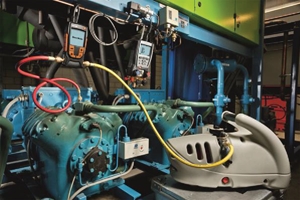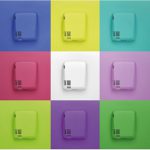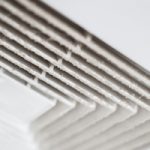If you’re looking for a high-quality digital vacuum gauge that delivers the ideal combination of reliability and value for money, you can’t go past the testo 552 Vacuum Gauge.
The testo 552 Vacuum Gauge offers fast and accurate readings as to how effectively heat pumps and refrigeration systems are dehumidifying and removing foreign matter.
It is therefore the ideal tool for any tradesperson who is involved in the installation or maintenance of refrigeration units, potentially helping save them a significant amount of time and money in the long run.
Here is a basic guide to using the testo 552 Vacuum Gauge.
Connecting the testo 552
The testo 552 can be connected to air-conditioning and refrigeration systems in a variety of different ways, either directly or by using a digital manifold.
While these numerous connection options make the testo 552 a practical and versatile device, they make it impossible to succinctly describe how to connect this device.
Fortunately, your testo 552 instruction manual contains a number of diagrams and handy instructions as to the various options you have when it comes to connecting your vacuum gauge.
Undertaking field calibration
To calibrate your testo 552 to a vacuum pump, simply connect the pump to one of the 552’s two ports. Next, seal up the remaining port with a sealing cap provided and start the pump. Remember, it is important that the vacuum pump be capable of pulling a vacuum of less than 0.1hPa/75 micron.
As a handy feature, the testo 552 can only be calibrated in the field through a double keystroke input. This will help you avoid accidental calibrations. Further instructions can be found in your testo 552 instruction manual.
Performing essential maintenance
Your testo 552 is built with durability and reliability in mind. As such, you should never be required to clean the sensor of this instrument, unlike the Pirani sensors used in vacuum gauges such as those provided by CPS, or the Javac Acravac.
When cleaning the outer housing of the device, do not attempt to clean the sensor itself, as this could lead to deviations in measurement. Only clean the instrument housing, and do not use aggressive cleaning agents or solvents. Instead, use soapy water or other mild household cleaning agents.
This is just a basic guide to a few common functions of the testo 552. For more information, consult your owner’s manual.









 Reduce cooking oil costs while ensuring quality
Reduce cooking oil costs while ensuring quality Expert knowledge on CO2 monitoring
Expert knowledge on CO2 monitoring Refrigeration knowledge - in 3 modules
Refrigeration knowledge - in 3 modules



